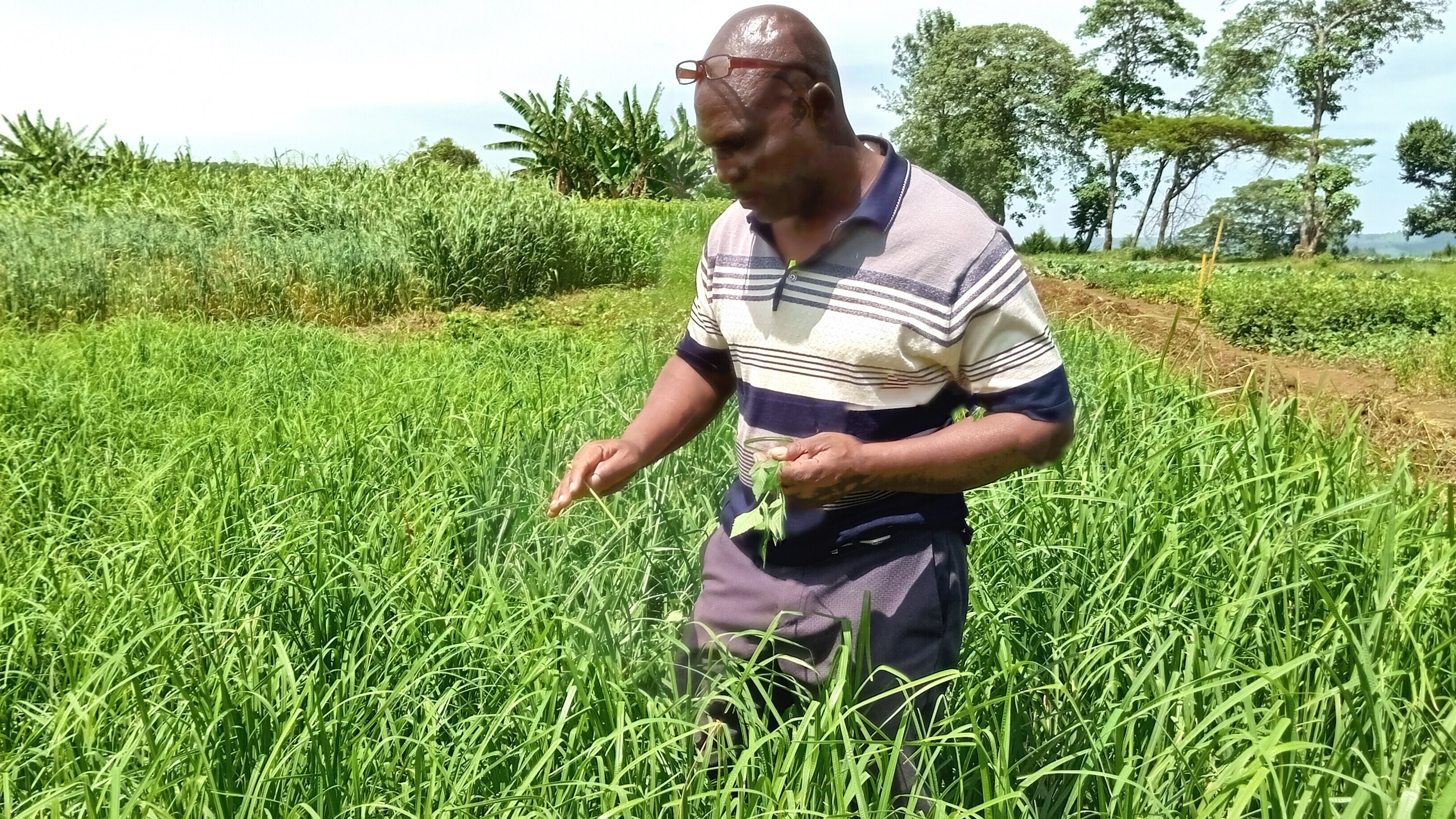Reasons behind diminishing popularity of nutritious wimbi porridge

A member of Kaimosi Farmers Training College staff, Mr William Kebenei, assessing a section of millet farm ahead of a Farmers' Day. Porridge has been diminishing in many households and eateries in Nandi County and the entire North Rift. Photo/Jeremiah Chege
For many years, porridge has been an indigenous diet among many households in Nandi County and the entire North Rift.
The situation is the same countrywide.
It is a nutritious drink consisting of millet and sorghum grains, consumed by both children and adults in the community.
However, the commodity is currently hardly available in the local eateries like before.
Consumers have been forced to dig deeper into their pockets to order a cup of porridge for refreshment.
For the past two decades, the residents who are majorly farmers have gradually abandoned growing sorghum and millet which has led to shortage of the produce in the local markets.
The growing of indigenous grains is no longer popular in the region owing to intensive management encompassing sorghum and millet farming.
Emily Kosgei,76, a sorghum farmer in Kesengei Village in Nandi South said that despite the high market demand for the grains, people shun growing such ancient crops due to high costs of operation.
She told AVDelta News that she has been growing both sorghum and millet for 20 years until recently when she started phasing out and remained with the sorghum crops only on her one-acre farm.
“Initially, sorghum and millet were also a major source of food in cooking ugali and porridge for my family. I sold surplus to the local market and earned good money to pay school fees and purchase household effects,” she stated.
Ms Kosgei said that age was catching up with her and she opted to sorghum farming only though for mainly subsistence.
“Farming such indigenous crops needs passion and self-dedication. I noticed that my children cannot afford to inherit my sorghum and millet farm, it’s complicated and labor intensive to manage the crops,” she said.
Among the regions where sorghum and millet are doing well include Nandi South along the escarpments and Tinderet hills.
The region has well drained soils, fertile soil and the sloppy terrains of the larger Bonjoge hills and Tinderet area where the grains were majorly grown.
“Weeding and harvesting the grass crops is painstaking. It is the reason why most people do not grow them in large scale since it’s labour intensive and difficult to do mechanisation for fast and efficient crop production,” she said.
The locals have opted for other cash crops like coffee and tea farming that need minimal cost of operation.
Ms Violet Cheptoo, who is the chair of a self-help group in Nandi County, said that shortage of the produce hindered the progress of their processing and packaging of the porridge flour.
They had established their milling plant and secured Kenya Bureau of Standard (KEBS) license, but lack of constant and sufficient supply of the sorghum and millet grounded the project.
“We sourced the commodity from Uasin Gishu and Baringo counties but it was too costly and unsustainable. Our milling plant was formulating sorghum and millet in making porridge among other children supplements,” said Cheptoo, noting that they had to close down the milling facility.
A spot-check by AVDelta News at Kapsabet market revealed that a 90kg of sorghum is sold at Sh6,500 and a tin go at Sh200.
Millet is sold at Sh8,500 and a tin (korokoro or gorogoro) is retailed at Sh300.
Despite the inadequacy, the grains are still the highly sought commodities. A gourd of porridge costs between Sh50 and Sh100 and many prefer it over caffeine in tea.
Sorghum is a nutrient-rich cereal grain. It’s low in fat, but high in protein, fibre, B vitamins, and micronutrients.
It’s also a source of variety of nutrients, including B vitamins, which play an essential role in metabolism, nerve cell development, and healthy hair and skin.
While millet is a great source of carbohydrates, providing sustained energy. A 100-gram serving of millet contains approximately 73 grams of carbohydrates, making it an excellent choice for athletes.
The patients with diabetic medical conditions are prescribed to eat ugali made from millet flour with high fiber content and slow digestion.
According to Agriculture and Food Authority (AFA) 2022 report, area under sorghum declined by 10 percent in 2021 compared to 2020 in Kenya.
Among the factors that led to significant production decline include poor weather conditions which led to a cut down from 316, 256 to 131, 769 tons in 2021.
Despite an increase in area under millet in Kenya, there was a sharp decrease of the production from 155,908 to 62,333 tonnes in 2021.
Learning institutions in Nandi County have since partnered with the county government to conduct research and mobilise the local farmers to adopt new varieties of crops that are resistant and have a high production rate.
County Executive in charge of Agriculture Kiplimo Lagat said that a series of training and extensional services have been initiated at Kaimosi Farmers Training College (KFTC) to empower farmers with the right varieties of the sorghum and millet crops to grow in the region.
“Brewery industries provided a market for the cereal grains before they were closed before, but there is high demand for the produce and therefore the need for farmers to embark on sorghum and millet farming which have not been explored,” said Dr Kiplimo.
Comments and Responses
To advertise with us, send an email to advert@avdeltanews.world

Be the First to Comment